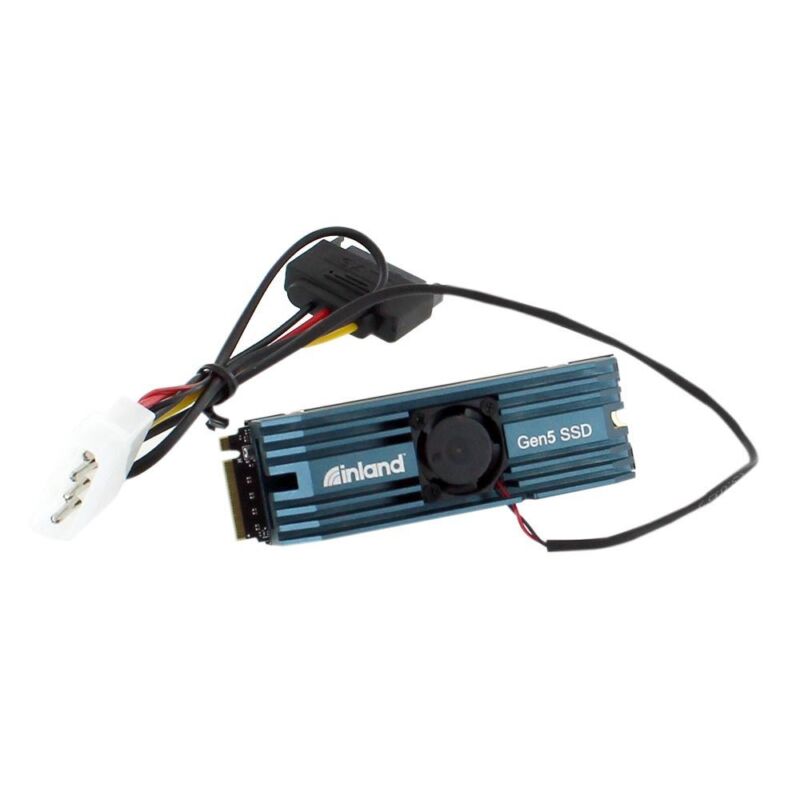
In the high-end PC market, it's vitally important that the numbers always continue to go up. That means faster performance, newer specs, and (on occasion) new model numbers for existing components. One of the latest numbers to go up is the PCI Express version number supported by many motherboards; all PCs built around AMD's Ryzen 7000-series chips and some PCs using Intel's 12th- or 13th-generation CPUs support graphics cards solid-storage drives that use the PCI Express 5.0 interface, which is up to two times faster than version 4.0.
But actual PCIe 5.0 SSDs are just beginning to arrive on store shelves (via Tom's Hardware), and like so many early-adopter products, they seem purpose-built for people with more money than sense. Based on Phison's E26 SSD controller, the Gigabyte Aorus Gen 5 10000 and MicroCenter-exclusive Inland TD510 promise peak read speeds of up to 10,000MB per second, compared to 7,450MB per second for the PCIe 4.0-based Samsung 990 Pro.
But both drives have major shortcomings, even assuming you have a compatible PC in the first place. The 2TB versions cost more than twice as much as you'll pay for a very-good PCIe 4.0 drive like the Samsung 980 Pro or WD Black SN850X; the Gigabyte drive is currently out of stock but historical pricing data says it sells for $340 when it's available, while the Inland drive is currently discounted to $350 from a regular price of $400.
There's also the matter of the drives' heatsinks, each of which is ridiculous in a special way. The Gigabyte SSD comes with a gigantic, heatpipe-festooned passive heatsink, which will run silently but might be large enough to cause compatibility problems depending on your motherboard and where you install it. The Inland drive's heatsink isn't as bulky, but it includes a tiny fan connected to a large power cable. These fans can make a lot of noise because they need to spin so quickly to move much air, and the lack of a fan speed controller will make the fan spin equally quickly (and loudly) whether you're stressing the drive out or not.

Other SSDs come with heatsinks, but they're mostly small passive heatsinks that don't make any noise (many of them have been built to ensure that the drives will physically fit into a PlayStation 5, which also makes them unobtrusive in most PCs). The vast majority of mid-to-high-end motherboards include one or more built-in SSD heatsinks anyway, often styled to complement the rest of the motherboard. Installing either of these PCIe 5.0 SSDs would require removing that motherboard heatsink, or using it and running the risk of not cooling the SSD well enough to keep it from throttling.
Even putting aside the cost of the PCIe 5.0 SSDs and their silly heatsinks, it's difficult to notice the performance benefit of these kinds of drives right now. DirectStorage is a newish Windows API that allows the GPU to load and decompress assets directly from your SSD, rather than using your CPU as a go-between. Recent tests using the DirectStorage-compatible Forspoken show that the difference between PCIe 4.0 and PCIe 5.0 drives is nearly imperceptible with today's drives, and past tests show that even PCIe 3.0 and SATA SSDs can benefit quite a bit from DirectStorage—it's not a feature that requires a cutting-edge drive, and it's also not a feature supported by many games as of this writing.
PCIe 5.0 drives will come down in price eventually, and improved SSD controllers and NAND chips with more advanced manufacturing processes should eventually make them run cooler, too. In the meantime, look at the price tags and the designs of these early products, shake your head, and move on.



3175x175(CURRENT).thumb.jpg.b05acc060982b36f5891ba728e6d953c.jpg)


Recommended Comments
Join the conversation
You can post now and register later. If you have an account, sign in now to post with your account.
Note: Your post will require moderator approval before it will be visible.